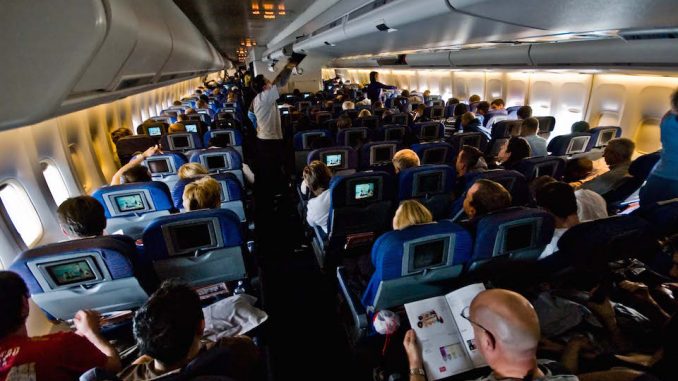
A new study has revealed that airline passengers and cabin crew could be breathing in toxic and potentially deadly fumes while travelling on airplanes.
German scientists say they have found dangerous chemicals and volatile compounds from burning aircraft fuel in the blood samples taken from people aboard planes.

BYPASS THE CENSORS
Sign up to get unfiltered news delivered straight to your inbox.
You can unsubscribe any time. By subscribing you agree to our Terms of Use
Latest Video
The chemicals, known as organophosphates, form the basis of many insecticides, herbicides, and nerve agents.
Dailymail.co.uk reports:
Most aircraft recycle around half of the air inside the cabin while other air is drawn in through the engines – often without passing through filters.
Leaks in the engines can cause this air to become contaminated with anti-freeze, oils and kerosene.
Known as ‘fume events’, sickness in passengers and aircrew have been recorded since the 1950s.
One such event was implicated in the death of a British Airways co-pilot Richard Westgate, who died in 2012 after suffering a condition called aerotoxic syndrome.
The 43-year-old had complained of suffering from persistent headaches, nausea and chronic fatigue and he claimed this was caused by fumes in the cockpit.
A study conducted following his death found that air in cockpits was being contaminated by contained organophosphates and other chemicals.
Now a new study by scientists at the University of Göttingen, which has still to be published, suggests the problem may be widespread.
The researchers tested 140 patients who reported symptoms of aerotoxic syndrome and found traces of organophosphates and volatile organic compounds in their blood.
Dr Astrid Heutelbeck, who led the research, told German newspaper The Local: ‘These are all substances that are forbidden in consumer products.’
Organophosphates, however, are known to circulate widely in the environment as they are used in many pesticides.
This means the general public can often be exposed to these chemicals by eating fruit or vegetables without washing them first.
Some organophosphates are also used for treating lice in fish farming and there are fears the chemicals can accumulate in the bodies of marine animals.
Historically, organophosphates were also used in nerve agents for chemical weapons.
It is thought they may get into aircrafts from fuel leaks from the engine into the air supply.
According to the UK’s department of transport, fume events occur on roughly 0.05 per cent of flights.
Research conducted by Cranfield University for the Department of Transport in 2011 showed 95 per cent of aircraft cabin samples had no detectable amounts of two organophosphates called TCP and TOCP.
It did find low levels of an organophosphate called TBP, which is an element in aircraft hydraulic fluid, but the levels were 1,000 times smaller than the exposure limits set by health authorities.
New airliners, such as the Boeing 787 Dreamliner, are now being designed to avoid the use of ‘bleed air’ from the engines.
A 2013 report published by Professor Michael Bagshaw, a specialist in aviation medicine at Kings College London, also noted: ‘The amounts of organophosphates to which aircraft crew members could be exposed, even over multiple, long-term exposures, are insufficient to produce neurotoxicity.’
However, the new study is likely to raise fresh concerns and lead to calls for a full epidemiological study being conducted to assess the risk to passengers and aircrew.


